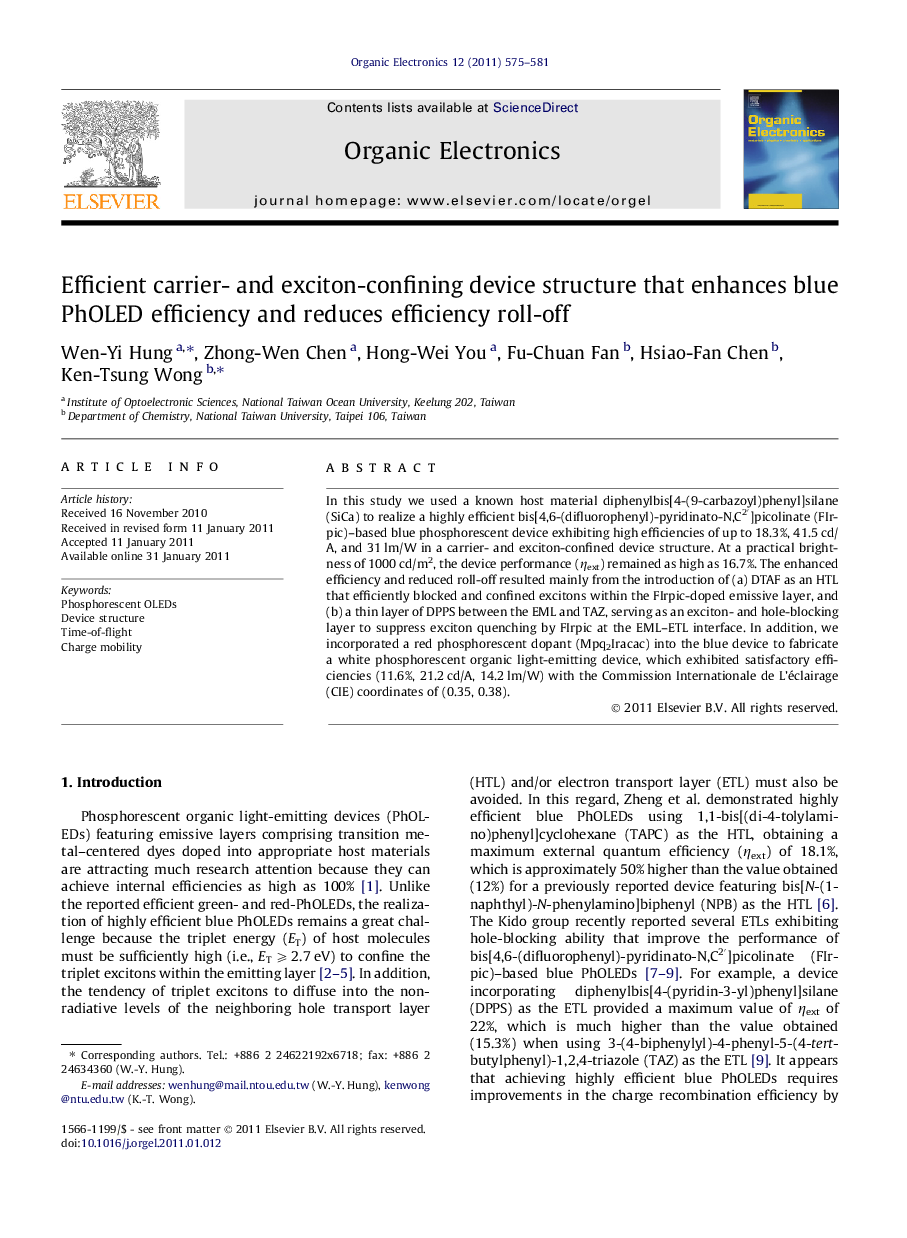| Article ID | Journal | Published Year | Pages | File Type |
|---|---|---|---|---|
| 1265428 | Organic Electronics | 2011 | 7 Pages |
In this study we used a known host material diphenylbis[4-(9-carbazoyl)phenyl]silane (SiCa) to realize a highly efficient bis[4,6-(difluorophenyl)-pyridinato-N,C2′]picolinate (FIrpic)–based blue phosphorescent device exhibiting high efficiencies of up to 18.3%, 41.5 cd/A, and 31 lm/W in a carrier- and exciton-confined device structure. At a practical brightness of 1000 cd/m2, the device performance (ηext) remained as high as 16.7%. The enhanced efficiency and reduced roll-off resulted mainly from the introduction of (a) DTAF as an HTL that efficiently blocked and confined excitons within the FIrpic-doped emissive layer, and (b) a thin layer of DPPS between the EML and TAZ, serving as an exciton- and hole-blocking layer to suppress exciton quenching by FIrpic at the EML–ETL interface. In addition, we incorporated a red phosphorescent dopant (Mpq2Iracac) into the blue device to fabricate a white phosphorescent organic light-emitting device, which exhibited satisfactory efficiencies (11.6%, 21.2 cd/A, 14.2 lm/W) with the Commission Internationale de L’éclairage (CIE) coordinates of (0.35, 0.38).
Graphical abstractFigure optionsDownload full-size imageDownload as PowerPoint slideResearch highlights► A highly efficient FIrpic-based blue PhOLED possesses a carrier-balanced and exciton-confined device structure. ► The device exhibited a maximum external quantum efficiency of 18.3% (41.5 cd/A) and a power efficiency of 31 lm/W. ► The quantum efficiency roll-off was minimal: the value of ηext remained as high as 16.7% at a brightness of 1000 cd/m2. ► By incorporating a red phosphorescent dopant, we also fabricated a white PhOLED with the CIE coordinates of (0.35, 0.38).
